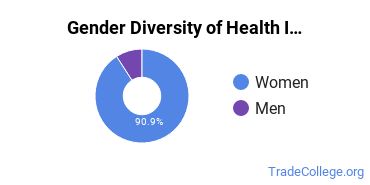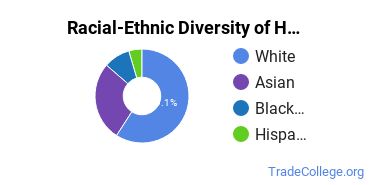Health Information Management at SUNY Polytechnic Institute
What traits are you looking for in a health information school? To help you decide if SUNY Polytechnic Institute is right for you, we've gathered the following information about the school's health information program.SUNY Poly is located in Utica, New York and approximately 3,044 students attend the school each year.
Want to know more about the career opportunities in this field? Check out the Careers in Health Information Management section at the bottom of this page.
Featured schools near , edit
SUNY Poly Health Information Management Degrees Available
- Bachelor’s Degree in Health Information
Online Classes Are Available at SUNY Poly
Don't have the time or the flexibility in your schedule to take traditional classes? Online courses may be the perfect solution for you. They allow independent learners to study when and where they want to while offering the rigor of in-person classes.
SUNY Poly does offer online education options in health information for the following degree levels for those interested in distance learning:
- Bachelor’s Degree
SUNY Poly Health Information Management Rankings
Each year, College Factual ranks health information programs across the country. The following shows how SUNY Poly performed in these rankings.
Note: Although rankings can help you see some information about a school, it's not a good idea to depend on them alone. Be sure to check out other things about the school before making your decision to attend.
Bachelor’s Degree Overall Quality & Other Notable Rankings
The health information major at SUNY Poly is not ranked on College Factual’s Best Colleges and Universities for Health Information Management. This could be for a number of reasons, such as not having enough data on the major or school to make an accurate assessment of its quality.
| Ranking Type | Rank |
|---|---|
| Most Focused Health Information Management Bachelor’s Degree Trade Schools | 5 |
| Most Popular Online Health Information Management Bachelor’s Degree Trade Schools | 13 |
| Most Focused Health Information Management Trade Schools | 14 |
| 19 | |
| Most Popular Online Health Information Management Trade Schools | 20 |
| Most Popular Health Information Management Bachelor’s Degree Trade Schools | 22 |
| Best Health Information Management Bachelor’s Degree Trade Schools | 25 |
| 30 | |
| Best Health Information Management Trade Schools | 33 |
| Most Popular Health Information Management Trade Schools | 33 |
| Best Value Health Information Management Bachelor’s Degree Schools | 35 |
| Best Value Health Information Management Schools | 56 |
Health Information Student Demographics at SUNY Poly
Take a look at the following statistics related to the make-up of the health information majors at SUNY Polytechnic Institute.
SUNY Poly Health Information Management Bachelor’s Program

About 59% of those who receive a bachelor's degree in health information at SUNY Poly are white. This is above average for this degree on the nationwide level.
The following table and chart show the race/ethnicity for students who recently graduated from SUNY Polytechnic Institute with a bachelor's in health information.

| Race/Ethnicity | Number of Students |
|---|---|
| Asian | 6 |
| Black or African American | 2 |
| Hispanic or Latino | 1 |
| White | 13 |
| International Students | 0 |
| Other Races/Ethnicities | 0 |
SUNY Poly also has a doctoral program available in health information. In 2021, 0 student graduated with a doctor's degree in this field.
Related Majors
Careers That Health Information Grads May Go Into
A degree in health information can lead to the following careers. Since job numbers and average salaries can vary by geographic location, we have only included the numbers for NY, the home state for SUNY Polytechnic Institute.
| Occupation | Jobs in NY | Average Salary in NY |
|---|---|---|
| Medical and Health Services Managers | 25,830 | $143,030 |
References
*The racial-ethnic minorities count is calculated by taking the total number of students and subtracting white students, international students, and students whose race/ethnicity was unknown. This number is then divided by the total number of students at the school to obtain the racial-ethnic minorities percentage.
- College Factual
- National Center for Education Statistics
- O*NET Online
- Image Credit: By Bssasidhar under License
More about our data sources and methodologies.
Featured Schools
 Request Info
Request Info
|
Southern New Hampshire University You have goals. Southern New Hampshire University can help you get there. Whether you need a bachelor's degree to get into a career or want a master's degree to move up in your current career, SNHU has an online program for you. Find your degree from over 200 online programs. Learn More > |
